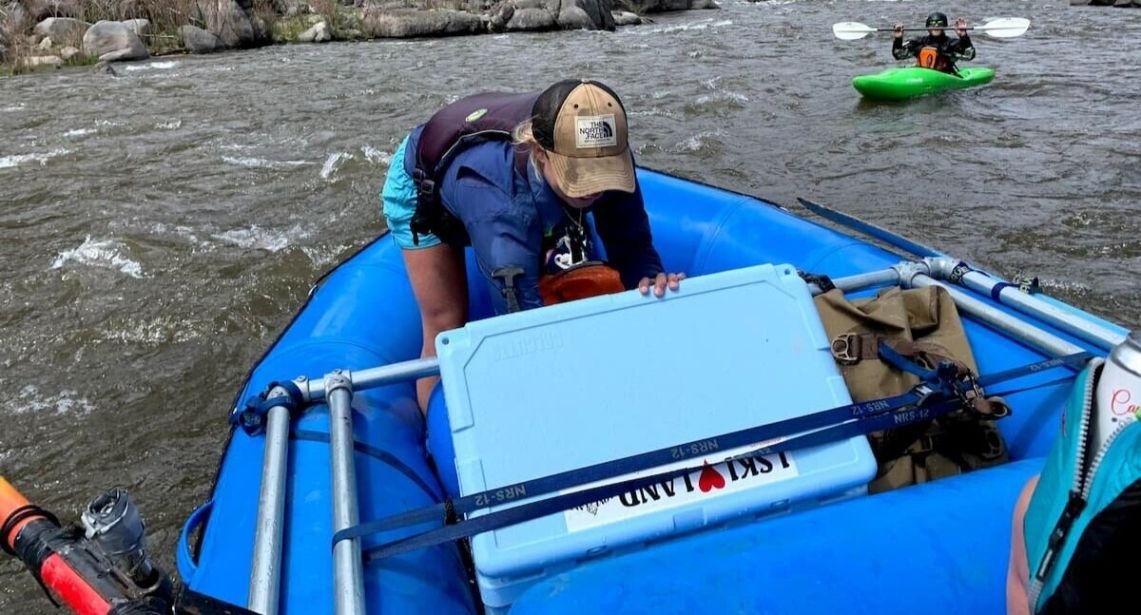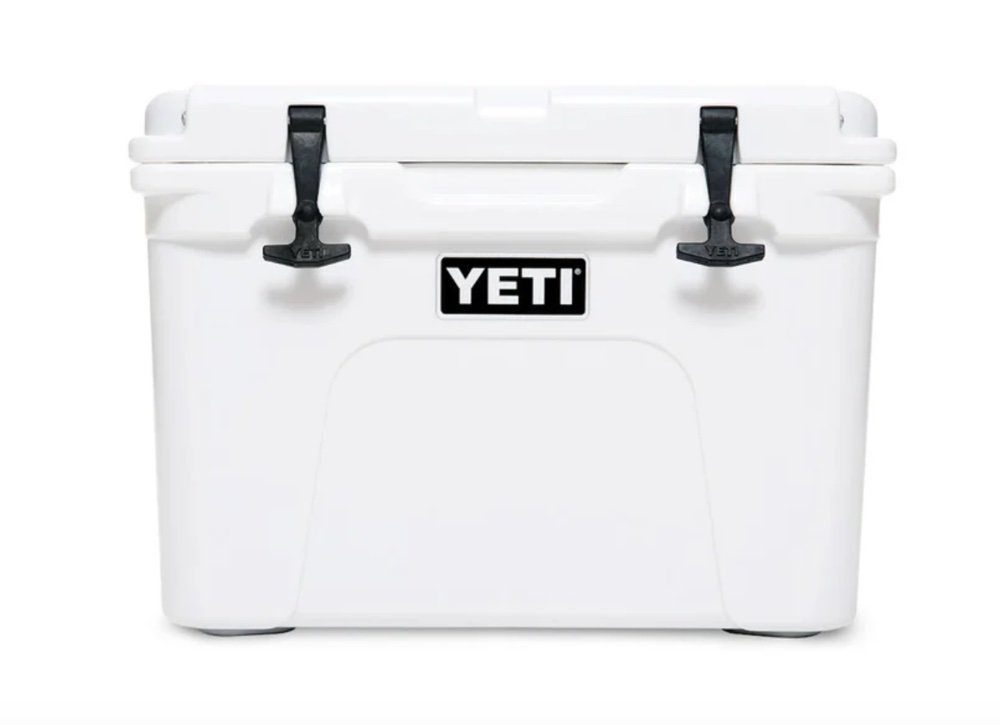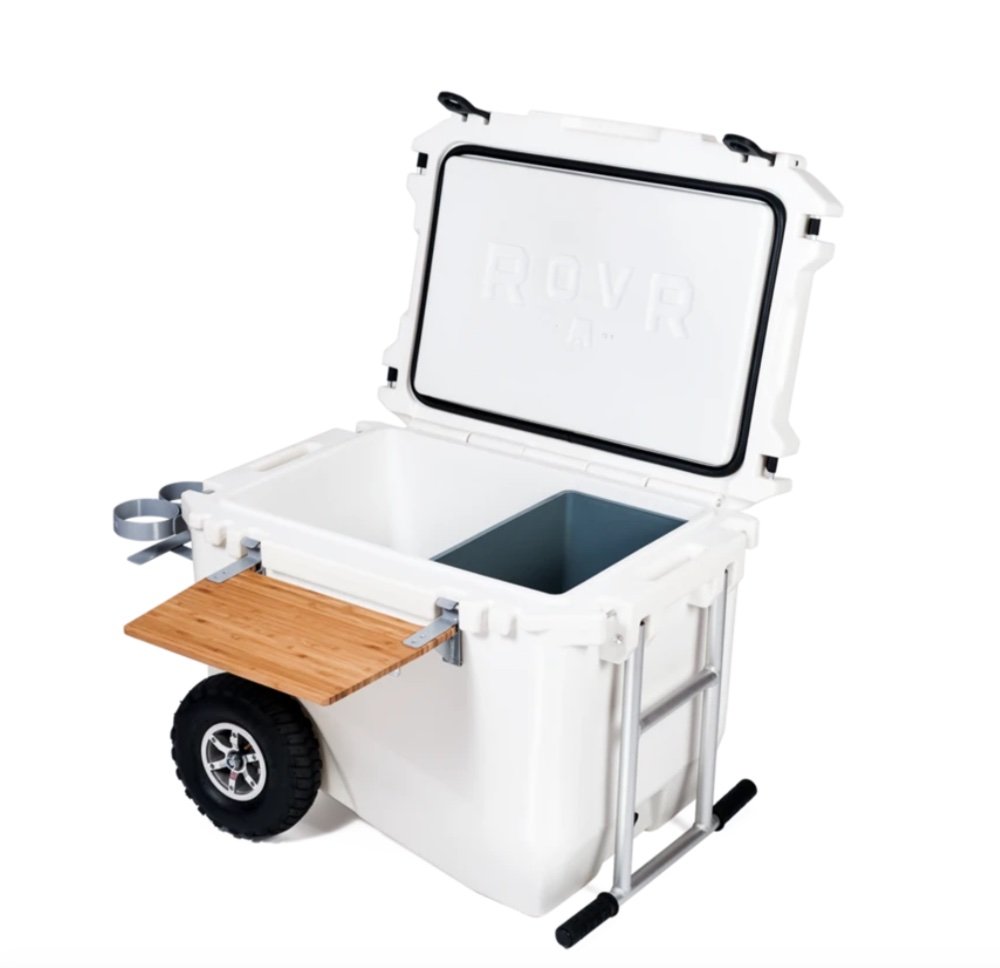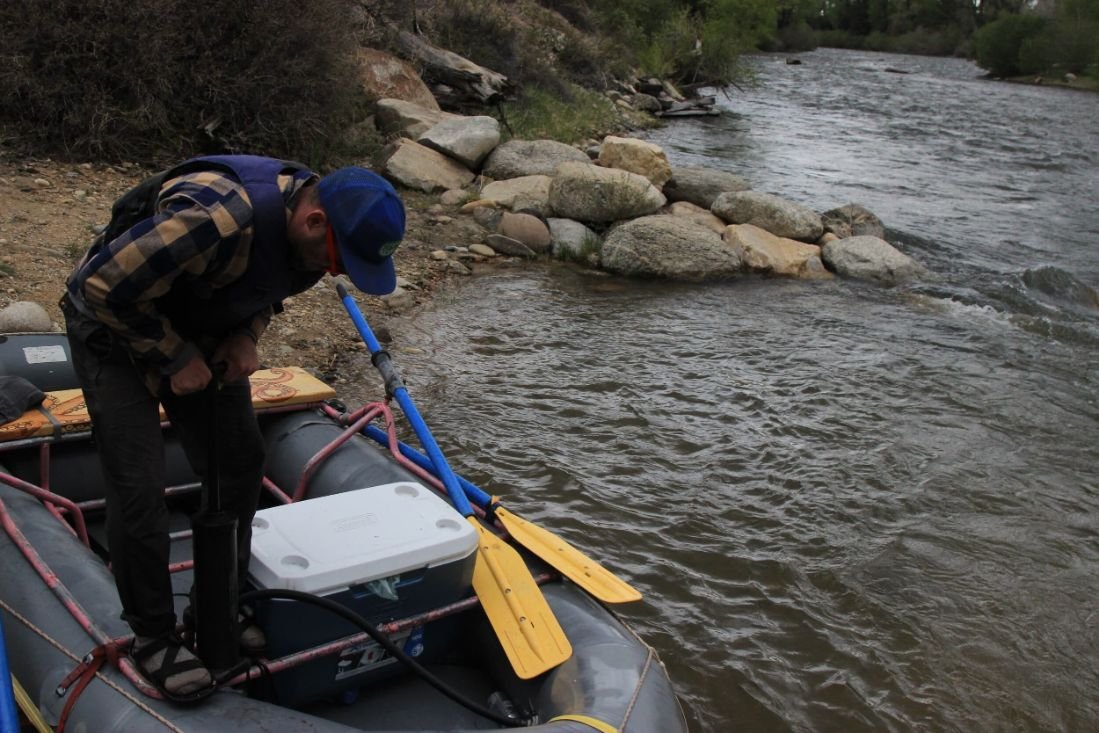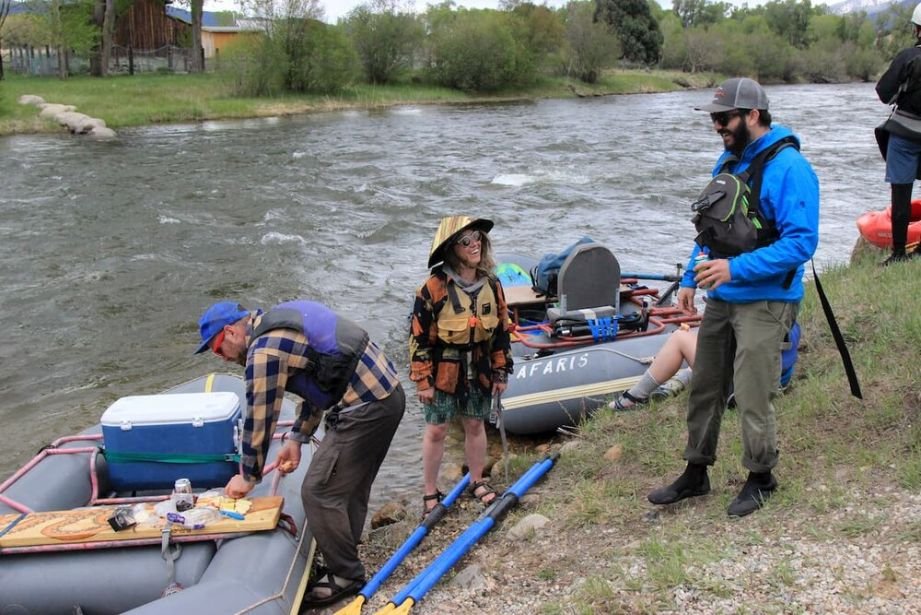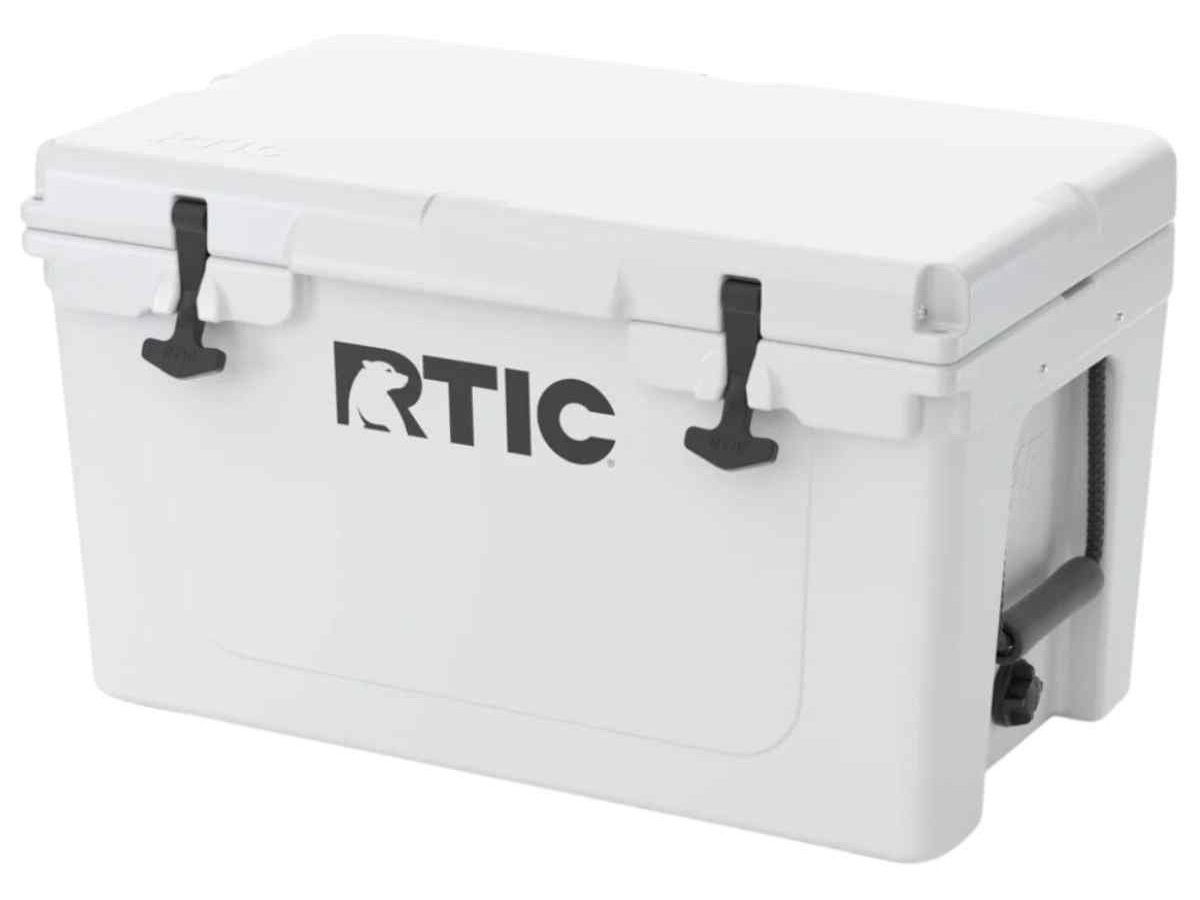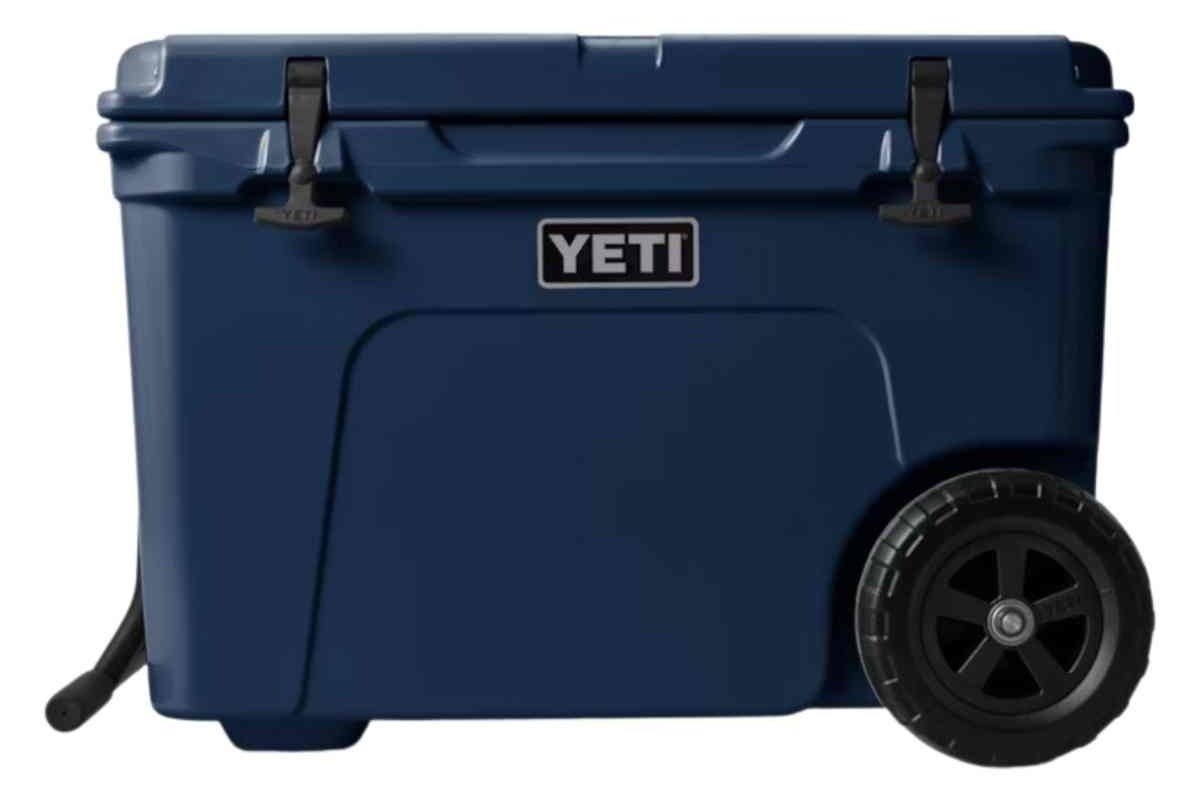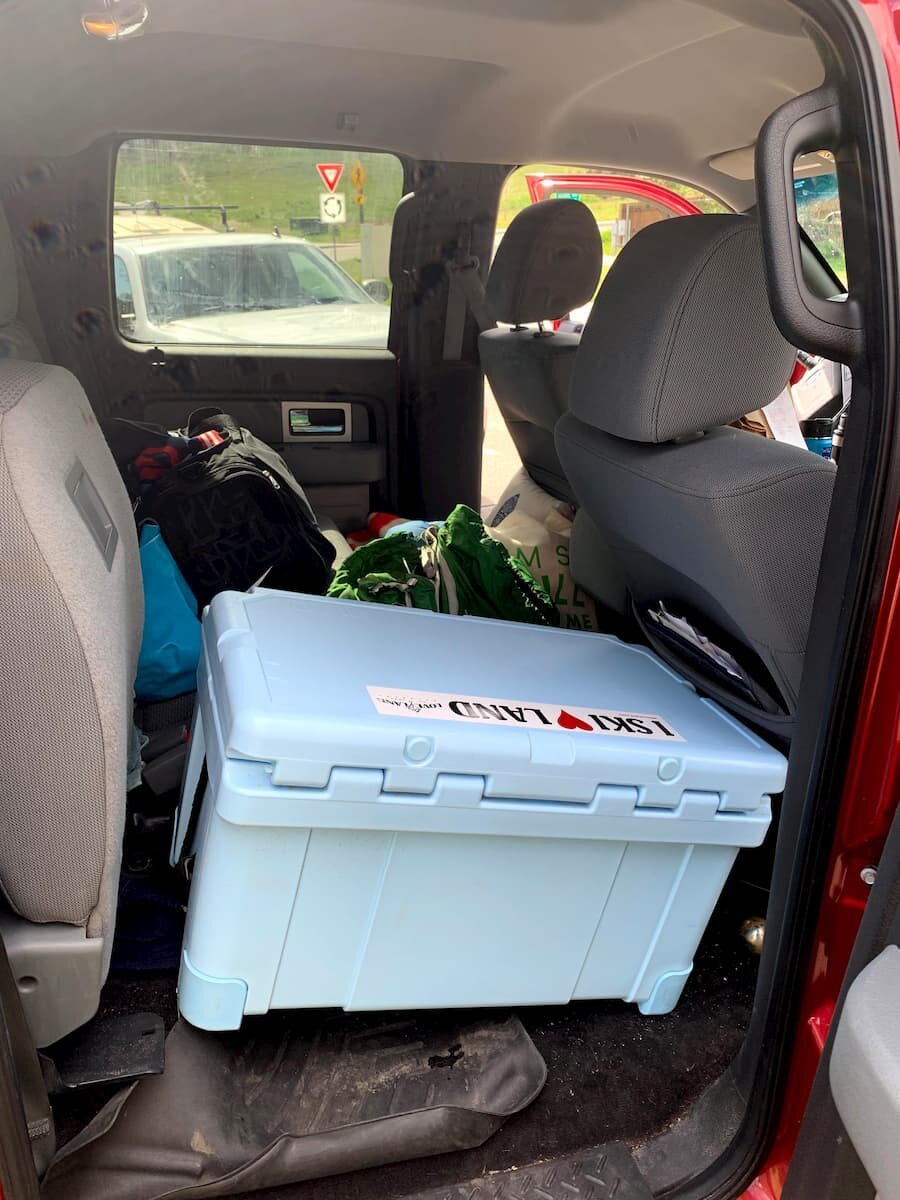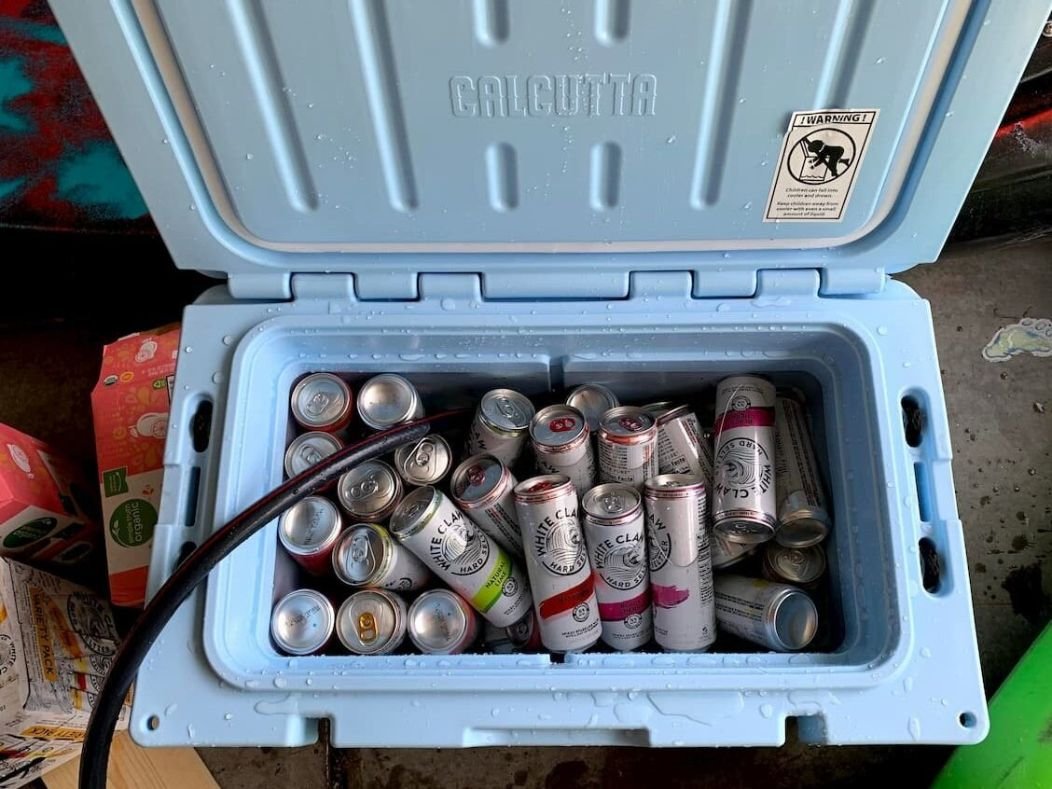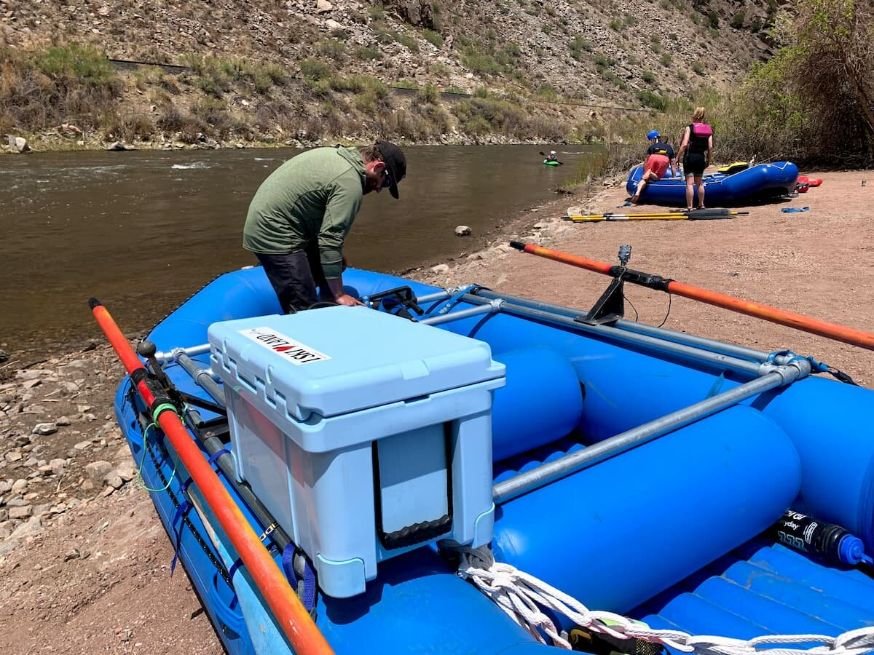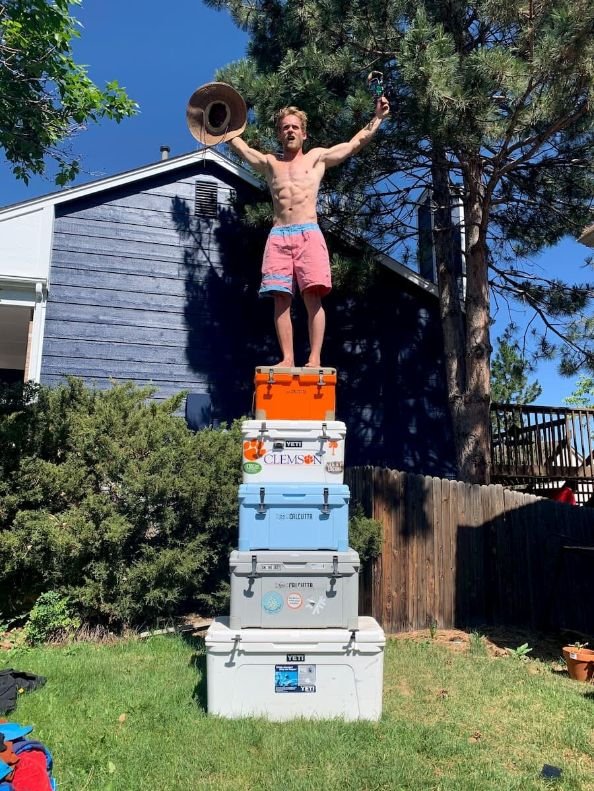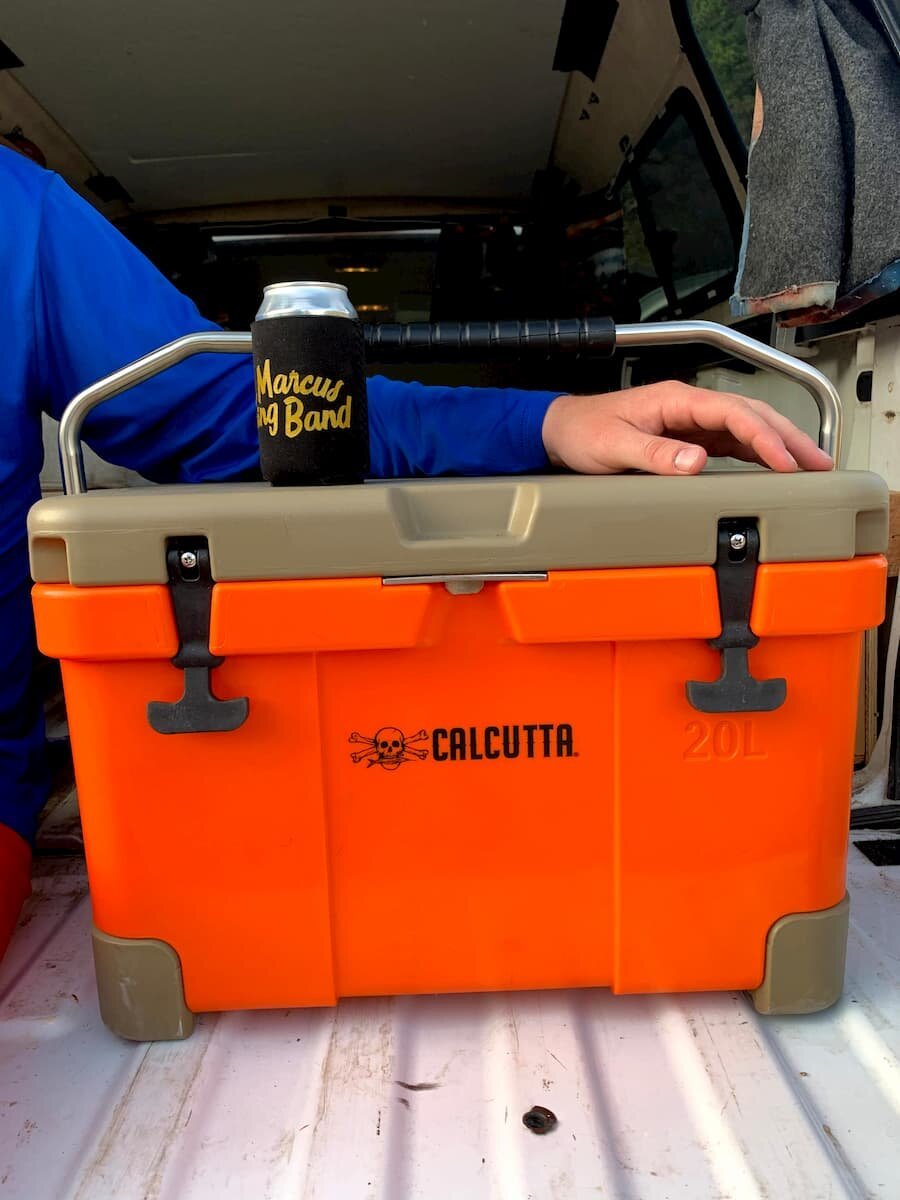Best Coolers for Camping of 2025
HARDSIDED COOLERS AND ICE CHESTS FOR ICE RETENTION, PORTABILITY, CAPACITY, AND PRICE
Home > Gear Reviews > Camping
June 27th, 2024 updated with new Yeti alternative winner, new models tested by Engel
Get out and away—far enough away from refrigeration that you’re ready to bust out a cooler! We researched dozens of camping coolers to find the best hard-sided coolers for your weekend adventures, your multi-day rafting trips and backcountry basecamps, and your day at the lake.
Whether you want a camping cooler with 10-day ice retention or to spend less than $100 on a cooler, we nerded out about ice baskets, locking latches, and whether the drinks on the bottom are reachable when there's stuff on top.
Not all coolers are equal (though they may look like it!) so we get down and dirty in the ice to find what makes a cooler worthy of taking on your next camping trip.
Going camping? See our guides on the Best Camp Chairs and The Best Camping Tents
We create reader-supported, objective gear reviews independently selected by our editors. This story may contain affiliate links, which help fund our website. When you click on the links to purchase gear, we may get a commission, without costing you an extra cent. Thank you for supporting our work and mission of outdoor coverage for every body! Learn more.
camping coolers Summary Table
| CAMPING COOLER | TREELINE AWARD | VOLUMES | WEIGHT (LBS) | LOCKABLE? | ICE RETENTION | BEAR RESISTANT |
|---|---|---|---|---|---|---|
| Yeti Tundra Series | Best Overall Read why |
35, 45, 65, 75, 105, 110, 125, 160, 210, 250, 350 quarts | 20 - 89 | Y | Not stated | IGBC certified when locked |
| Calcutta Renegade | Best Yeti Alternative Read why |
11, 20, 35, 55, 75, 100, 125 liters | 10 - 50 | Y | Not stated | Not certified but can be locked |
| Rovr Wheeled Cooler | Best Wheeled Read why |
45, 60, 80 quarts | 37 - 65 | N | Up to 8 days | IGBC certified when locked |
| Coleman Xtreme 5 Day | Best Under $100 Read why |
70 quarts | 13 | N | Up to 5 days | No |
For more of our favorite summer gear recommendations, see our Camping Gear Guides:
The Best Camping coolers
The Best Overall camping cooler: Yeti Tundra
Sizes available: 35, 45, 65, 75, 105, 110, 125, 160, 210, 250, 350 quarts
Weight: 20 - 89 lbs
Rotomolded: Yes
Lockable: Yes
Ice Retention: Not stated, but our independent tests show up to 10 days
Bear Resistant: IGBC certified when locked
What we like: ice retention, near-indestructible construction, rubber latch design, tie down and non-slip for functional use
What we don’t like: price
Even if you don’t camp, fish, boat, hunt, or go outdoors for more than Memorial Day weekend, you’ve probably heard of the YETI Tundra. Why? Because YETI has become the standard for ice-retaining, durable, and fashionable coolers.
The Tundra has been YETI’s flagship cooler since 2006, breaking the mold (so to speak) of foam-insulated coolers and the lunch-box-esque beer holders that had made up the market previously. The Tundra accomplished this with its construction: roto-molding, which had already been used for creating hard-sided whitewater kayaks.
Roto-molding keeps ice intact longer, food fresher, and beer colder than any other cooler out there. Popular Mechanics summarized the process: “During construction, the cooler mold is filled with polyethylene resin and spun while heated to distribute the material. You get a super-strong one-piece shell with uniform wall thickness and a stronger top and bottom.”
These camping coolers became popular after two brothers, who were tired of standing on their old coolers while fishing and having them cave under their feet, wanted something strong enough to take their “I’ve-got-em-on-the-line” stance and keep their catch fresh. While they probably didn’t mean to gather a cult following, that is exactly what they got.
Learn more in our in-depth review of the YETI Tundra Hard Coolers.
Compare Prices Of The Yeti Tundra
The Yeti cooler has rubber latches and a rope/plastic handle. Photo courtesy Josette Deschambeault.
Design
They listened to what outdoor enthusiasts wanted and delivered: the Tundra cooler was designed to be unbreakable, bear-resistant (when locked, of course), and keep things cold.
The list of features includes:
The walls are 2 inches thick with pressure-injected commercial-grade polyurethane foam insulation, along with the indestructibility of the rotomolded plastic;
Each rubber latch on the lid is designed not to snap off when you’re reaching for the brats;
Molded tie-down points for the truck, boat, or trailer;
Interlocking lips and gaskets to seal out heat and seal in the cold;
Military-grade rope handles, as well as molded plastic lid grips;
Non-slip feet, so your beverages don’t go sailing across the deck; and
Have you seen their cool colors?
On the other hand, YETI Tundras aren’t known for being lightweight, so keep that in mind if you throw out your back often, or don’t want to drag a heavy cooler from your vehicle to a campsite all the time!
But we can’t talk about the Yeti Tundra without addressing the biggest issue—the price.
Cleaning out the Yeti after 10 days on the river. Photo courtesy Josette Deschambeault.
Why Are Yeti Coolers So Expensive?
We think Yeti coolers are expensive for two reasons: technology and desirability.
Rotomolding.
Business Insider explains, “It involves having a polymer (plastic) heated within a mold and spun on an axis so that, as it cools, it settles evenly, forming a hollow core. This technology is used in all sorts of things, and on the industrial level, it's regularly replacing fabricated steel. In the case of coolers, it's then pumped with a relatively high-density foam, which, if done right, creates imperviously sealed insulation.”
Status Symbol
It’s a status symbol, and YETI can charge what they like. Like a Patagonia Better Sweater or Hydroflask or a Ferrari, these coolers are arguably better made than a lot of the competition.
Are Yeti Coolers Worth The Price ?
If you’re on the fence between a YETI cooler as your camp cooler or choosing another brand, these are the questions you have to answer for yourself:
Will you be using this cooler for multi-day trips?
If so, then it’s absolutely worth it. We’ve taken a YETI out on multi-day river trips on the Colorado, the Arkansas, and the Main Salmon rivers. Keeping food cold and fresh is worth it on Day 5 when you need your steaks to stay refrigerated!
Are you gentle with your coolers?
Yeah, we didn’t think so. If you’re hauling your cooler off of a truck, a trailer, a boat, a van, or anywhere around rocks, you’re bound to get some scratches. But Yetis are meant to be thrown around in raging rivers, bounced around crags, and dumped off the tailgate. (Whoops.)
Do you live in a van—or just don’t have a refrigerator?
No judgment; we’ve done it. If you need things to be cold traveling across the country, out in the desert for a week, or even on your way into the mountains for a bachelorette weekend, then forking over the money for a YETI may well be worth it.
Do you only pull out the cooler for an evening of beers around the fire?
Maybe you don’t need a YETI. Unless you’re looking to impress your brand-loving friends. Then maybe, yes.
Do you have the budget for a $250 cooler? Or a $1,300 cooler?
If you do, then go for it. If you don’t, look for another more affordable rotomolded option like the Calcutta. Or try to find a used Tundra. (Good luck.)
With both personal and professional reviews alike touting its effectiveness, the YETI Tundra was destined to be our Overall Winner for Best Camping Cooler.
Yeti Cooler Sizing
The YETI Tundra comes in sizes ranging from the Tundra 35 (which holds approximately 21 cans or 28 pounds of ice and starts at $250) to the Tundra 350 (which holds around 259 cans, or 329 pounds of ice, and starts at $1,300).
Be sure to check out this handy sizing guide from Top Rated Coolers to see just how much each YETI can hold—for instance, the Tundra 45 actually only holds about 35 liters.
Read More: How to Plan and Prep for a Full-Time RV Road Trip
Read More: How to Solo Camp
Several coolers of different sizes in the back of the truck. The Yeti in front is a 35 L and the one directly behind it is a 125L. Photo courtesy Josette Deschambeault.
Best Yeti Alternative Cooler: Calcutta Renegade
Sizes available: 11, 20, 35, 55, 75, 100, 125 liters
Weight: 10 - 50 lbs
Rotomolded: Yes
Lockable: Yes
Ice Retention: Not stated, but independent tests show up to 4 days
Bear Resistant: Not certified but does lock
What we like: price, durability, features that usually cost extra like built-in LED light and trays
What we don’t like: lacks the brand name, limited color availability
The rebels in us love a good underdog and any company whose logo embodies the Jolly Roger. In that vein, we give you the Calcutta Renegade, our winner for Best Rotomolded Cooler for the Monet. Although not nearly as lauded as some other cooler companies out there, we put the Renegade through the wringer and were never disappointed. The Renegade has all the features we like in other premium coolers like the YETI including multi-day rotomolded insulation plus some features that usually cost extra like a built-in LED light!
Designed with fishing in mind, Calcutta is made for boat decks. Fittingly, it has raised non-slip feet, anchor points, a molded ruler on the inside, bait tray (or sandwich storage), a drain with a leash, sturdy rubber latches, a lockable lid, and a brilliant light made for dusky evenings or early mornings trolling for that prized catch.
The second light is removable to become a second drain hole. While the 11 L and 20L have one overarching metal handle that can fold backward to stay out of your way, the larger sizes have rope handles with large plastic grips, much like the YETI Tundra.
Compare prices of the Calcutta Renegade
The inside of the 20 L Calcutta cooler. Photo courtesy Josette Deschambeault.
Design
While it’s made for boats, we’ve also taken our Renegades camping, rafting, kayaking, SUPing, skiing, and hauling beer cross country (that’s not a joke). We’ve even used them as beer storage in our households. (They also make great coffee tables.) Their durability is no joke—from the Carolinas, to Maine and New Hampshire, to Colorado, to British Columbia, the Yukon, and Alaska, we’ve tested the Renegade in the hottest, driest, coldest, and wettest conditions.
Durability
Even after one’s tester’s years-long lack of baby-ing it(he didn’t MEAN for it to fall out of the truck!), it’s still holding strong. Of course, this is no lightweight cooler—on multi-day river trips (or one spring ski day at Loveland Ski Resort), it takes two people to haul a 35L loaded with ice and beverages out of the truck bed. But the same can be said of any large cooler. The author, with her multiple shoulder surgeries, has not had problems hauling the cooler into or out of a raft, beers or no beers.
Coolers can be an essential addition to multi-day camping trips. Photo courtesy Josette Deschambeault.
The Calcutta in the back of the adventure truck. Photo courtesy Josette Deschambeault.
Ice retention
When we did a side-by-side ice comparison test with a YETI Tundra and a Calcutta Renegade, the ice performance was perfectly in sync. That’s because Calcutta also utilizes rotomolding and adds 2 inches of insulation—but they do it for cheaper if we’re looking at carrying capacity. A Calcutta Renegade 35 L actually holds 35 liters, and costs $250 retail; you’d have to purchase a YETI Tundra 45 to get 35 liters of capacity, and they start at $300.
Value
Cleaning out the 35 L Calcutta Renegade after 10 days on the river. Photo courtesy Josette Deschambeault.
Why is Calcutta cheaper? Rumor is, Calcutta was made for years in the same factory as YETI. With similar technology available, they were able to produce a similar high-quality cooler. While we can’t verify this statement, one thing is for sure: without the 4-letter-name “status symbol” inflation, you can get a premium cooler at a more affordable price. We’re okay with that.
Accessories
Calcutta Renegades, much like the Otterbox Venture, also have some pretty cool after-market accessories. They are compatible with a universal wheel kit (handy), a fishing rod gimbal (to fight that giant marlin up and on deck), an aerator pump (which turns your ice chest into a live bait hold—the only cooler we know of that can do so!), and even a second LED light if you need it. The 75 L+ coolers come with a divider/cutting board, as well. Unfortunately, those don’t seem to be available to buy separately for smaller-sized coolers.
The Calcutta Renegade is available in 11, 20, 35, 55, 75, 100, and 125-liter options.
If you’re looking for a great rotomolded hard-sided cooler that doesn’t cost the YETI price, look no further than the Calcutta Renegade.
Best Wheeled camping Cooler: Rovr Rollr
Sizes available: 45, 60, 80 quarts
Weight: 37 - 65 lbs
Rotomolded: Yes
Lockable: No
Ice Retention: Up to 8 days
Bear Resistant: IGBC certified when locked
What we like: rugged wheel construction, turning radius, accessory add ons like cutting board, ability to attach to a bicycle, more affordable than other wheeled models, wagon storage bin on top of cooler, adjustable handle
What we don’t like: weight, fewer size options
Tired of hauling a cooler over rocks, up and down hills, and across parking lots to your buddy’s tailgate? Stop spending money on a chiropractor, and pick up the Rovr Rollr rolling cooler. (You may need all the money you’ve spent at the chiropractor to buy one, but, hey, details!)
Rovr Rollr coolers, a Colorado startup that swooped into the hearts of cooler lovers worldwide, first came out with their lineup about the same time Yeti did. But even with their wheeled niche, glowing reviews for these coolers are everywhere—from the Today Show to Outside Magazine. Don’t believe us? Check out the list of reviews below—we could have kept going, but after nine pages of Google links, we got tired! Most everyone was impressed with the ability to attach the Rovr Rollr to a bicycle, much like you would a pull-along child’s bike seat. As an attachment that turns your cooler into a bike trailer, we’ve heard of crazier things.
Now, we have to say—Rovr Rollrs are not the cheapest, nor the lightest coolers on the market. (The Rollr 45 starts at $370, and weighs 37 pounds before ice.) However, what’s included makes up for that—unmatched heavy-duty rubber tires, stainless steel axles, adjustable-height aluminum pull handle, durable dual rubber latches, double compartmented dry bin, and wagon bins for extra storage on top of the cooler. (There are also plenty of accessories for the Rovr, including dual cup holders, wooden sideboards, an umbrella or fishing rod holder, and a bike attachment kit.) These coolers were built to be hauled over everything, without damaging the goods.
See our in-depth review of the Rovr Rollr cooler for more information.
View the Rovr Rollr
On a hot summer day, the burly tires on the Rovr made it easy to roll right through the sand and into the water. That way, we didn’t have to get out of the water to get our snacks and drinks! Photo by Josette Deschambeault.
Yeti Tundra Haul Vs. Rovr Rollr
Trying to decide between Yeti’s wheeled cooler and the Rovr Rollr? The ice retention test conducted by Coolers World showed that it is not quite as good as a wheeled Yeti (4 days vs. 6 days in a Yeti Tundra Haul).
But we think there are lots of good reasons to go with the Rovr instead if you want wheels. Rovr has bigger, badder, hardier wheels to take on mud and uneven terrain.
The Rovr Rollr has more options for accessories and attachments, like the bike and umbrella attachment.
Meanwhile, the Tundra Hauler isn’t compatible with many of the attachments that work on other Yeti models.
Lastly, Rovr Rollr comes in three sizes (45 L, 65 L, and 80 L) whereas the Tundra Hauler only has one size 45 L. Realistically, it’s a pick your poison. But we think if you don’t need 6 days worth of ice, and want to save $30 on a 45 L, then the Rovr is a solid Yeti alternative (and bad back saver!).
Best Value Cooler: Coleman Xtreme 5 Day
Sizes available: 70 quarts
Weight: 13 lbs
Rotomolded: No
Lockable: No
Ice Retention: Up to 5 days
Bear Resistant: No
What we like: surprisingly durable for a budget cooler, enough ice retention for shorter camping trips
What we don’t like: lacks features of more expensive coolers, wheeled version is not as good on rugged terrain as more expensive coolers, thinner plastic is less durable
If you’re just looking for a solid cooler for day trips, family trips to the lake, or the backyard barbecue at a bargain price, then the Coleman Xtreme 5 Day Cooler is your best bet. While not the toughest or the coldest cooler on the market, this is one of the best value picks we have found for the performance it provides.
The Coleman Xtreme is a non-rotomolded cooler, meaning that it does not have the strong durability or high-grade insulation that rotomolded coolers do. The thinner plastic was still strong enough to hold Outdoor Gear Lab’s 225-pound tester jumping on it without breaking, but over time, wore out more quickly. However, don’t count it out!
From all of the reviews, we saw that it was great for single-day or overnight activities—lightweight, very spacious, easy to drain (with a leash!), and easy to carry. It was deep enough to hold a bottle of wine or a 2-liter soda bottle upright, has built-in cupholders on the lid, and a molded ruler to prove those fishing triumphs. Outdoor Gear Lab tested it to just shy of a 4.8-day mark of keeping beers the perfect 50 degrees, well within the average for other coolers (including rotomolded coolers) that they tested.
Coleman coolers are classics, and the Xtreme 5 Day is no exception. For a simple, functional, and budget-friendly cooler, look no further.
Coleman Xtreme coolers come in 50qt, 62qt, 70qt, 100qt, and 150qt options.
View The Coleman Xtreme 5 Day
Using the Coleman Xtreme on a rafting trip means using a cooler with multiple days of ice retention so we can have fresh food in camp.
The Coleman Xtreme Day 5 works well for keeping items cold on shorter day trips. Photo courtesy Josette Deschambeault.
Contenders
RTIC 45 L HARD cooler
Sizes available: 20, 45, 65, 110, 145 quarts
Weight: 18 - 60 lbs
Rotomolded:
Lockable: Yes
Ice Retention: Up to 10 days
Bear Resistant: Not cetified but can be locked
A competitor to the Calcutta as a value Yeti Alternative Cooler, the RTIC Cooler was a favorite at Wirecutter. However, we liked the Calcutta better because it has a plug leash. Users also reported that the latches are stretchy.
View the RTIC 45 L HARD cooler
Sizes available: 70
Weight: 82 lbs
Rotomolded:
Lockable: Yes
Ice Retention: Up to 10 days
Bear Resistant: IGBC certified when locked
The Yeti Tundra Haul was the leading contender for Best Wheeled Camping Cooler. But after comparing the wheels, we think the Rovr RollR’s puncture-resistant tires can handle rocks and uneven terrain better. We also like that the Rovr RollR can be integrated with a bicycle and handles a little better for quick turns.
View the Yeti Tundra Haul
Sizes available: 20, 26, 40, 58, 75, 140 quarts
Weight: 18 - 64 lbs
Rotomolded:
Lockable: Yes
Ice Retention: Up to 10 days
Bear Resistant: IGBC certified when locked
Reviewers liked the interior LED lighting on the Orca Cooler, but its tall, narrow shape is hard to dig through. It's as expensive as a Yeti and reviewers also didn't find the handles as comfortable or as easy to use.
View the Orca 75L Hardside
Sizes available: 16, 20, 40, 60, 75, 100, 165, 400 quarts
Weight: 12 - 91 lbs
Rotomolded:
Lockable: Yes
Ice Retention: Not stated
Bear Resistant: IGBC certified when locked
We found the Grizzly Cooler as expensive as the YETI without the same number of glowing professional reviews or customer opinions.
Compare prices of the Grizzly Cooler
Sizes available: 50, 70, 100 quarts
Weight: 11 - 18 lbs
Rotomolded:
Lockable: No
Ice Retention: Up to 5 days
Bear Resistant: No
The Igloo MaxCold was a promising favorite at Cnet and Good Housekeeping. It’s an affordable cooler with wheels. But after seeing the 70-quart Igloo Maxcold is almost twice the price of our value pick, we chose the Coleman XTreme 5 Day instead.
View the Igloo Maxcold
Sizes available: 20, 30, 50, 70, 150 quarts
Weight: 13 - 66 lbs
Rotomolded:
Lockable: No
Ice Retention: Not stated for all models
Bear Resistant: IGBC certified when locked
We were intrigued by the Pelican Coolers because of their lifetime warranties. However, we couldn't find as many professional or customer reviews as for the coolers that made our award list.
View the Pelican Elite
FAQ
Coolers crammed into the back of a truck still need to keep their items cold. Photo courtesy Josette Deschambeault.
Which cooler keeps ice the longest?
A lot of factors play into ice retention including your ice-to-goodies ratio, the temperature outside, pre-chilling, the size of your cooler. But all in all, we’ve found that the Yeti Tundra seems to win nearly every ice-retention test. That being said, coolers like the Calcutta Renegade scored very well in ice-retention tests, and in some sizes, even beat the Yeti Tundra.
What you’re looking for is the type and thickness of the insulation. The Yeti and Calcutta use thick insulation rated to an industrial-grade similar to that used in professional kitchens.
Yeti, for example, uses 2-inch thick Permafrost insulation. Otterbox uses its proprietary polyurethane insulation, which they also use in their dry boxes and phone cases, and it was one of our top picks.
Some cooler companies may claim up to 14 days of ice retention, but those would have to be ideal conditions and rarely opening the lid. Realistically, our research showed that these three coolers could hold ice up to 4-6 days without a refill.
What does “rotomolded” mean?
“Rotomolded” is also known as rotational molding. It’s a term for the way that the plastic is manufactured. Rotating the materials while heating them ensures an even thickness and minimal flaw, so there won’t be any weak spots or cold-loss spots on your cooler. This process is used to make other things like whitewater kayaks, which are mostly constructed of thick plastic that has to withstand the abuse of thousands of gallons of water, boulders, trees, and more. Rotomolded coolers are becoming increasingly more popular because of their durability, although the process does make these coolers more pricey.
Do I need to pre-chill my cooler?
Not necessarily, but it can’t hurt! Pre-chilling means cooling down your cooler before packing it with ice and food. If it’s been in a hot garage, in the sun, or it’s just plain hot outside, hose down your cooler with cold water. If you’re going to be out for several days and need your ice to last as long as possible, try putting ice packs in the night before you load it up.
Which coolers are dry-ice compatible?
Out of the coolers that we reviewed and chose as our winners, the Yeti Tundra, Otterbox Venture, Calcutta Renegade, and Rovr Rollr are dry ice compatible.
Why are some coolers measured in quarts, while others are measured in liters?
Great question—and we’re not sure! It’s just a preference per company. We did find a great chart from Top Rated Coolers that compares the actual sizes of the coolers that we reviewed, so you don’t have to worry about liters vs quarts.
What makes a cooler marine grade?
Hunting Waterfalls has a great article on the difference between a marine cooler and a regular cooler. Marine coolers are meant to be exposed to sea, sand, and surf. Saltwater and UV light can be damaging to a cooler, and cause it to lose ice quickly. However, most of our picks have addressed just that, and are marine-grade coolers.
Pro tip—if you’re looking for a cooler for your boat, go for a white cooler. It reflects the most sunlight and will keep your treats colder longer!
The size cooler you need depends on how many beverages you would like it to hold. Photo by Josette Deschambeault.
What size cooler do I need for camping?
Essentially, it all comes down to your planning—how many people, for how many days, and for how many meals?
Think about it like this: if 1 quart equals roughly 0.75 cans, a 12-quart cooler will hold nine sodas. But that’s without room for ice! A lot of cooler company websites will measure the number of cans each cooler can hold, with a 2:1 ice ratio. This ratio may be thrown off if you use an ice pack instead of ice cubes.
For the weekend warrior, a 30-50 liter cooler will be large enough for all your snacks and drinks, depending on how many people you plan to pack for. (The author’s household of 4 will bring a 35 L cooler filled with beers for a weekend river trip if that gives you any context.)
But if you have a large family (the author comes from a family of 6) and you want to go on a week-long camping trip, you may have to start looking in the 60-100 liter range. For hunters on a multi-day trip, or hunting for bigger game, 100+ liters may be the way to go.
Hard-sided coolers vs. soft coolers — which one do I want for camping?
If you’re looking for a multi-day camping trip, heading out on a boat, or road-tripping, we’d recommend a hard-sided cooler. They are far more durable than a soft-sided cooler. They also hold ice longer and have larger sizes available to fit more snacks.
If you’re looking for a cooler for a day at the lake, to throw in the car on your way to the playground, or just to bring sodas to the tailgate party, then a soft cooler or cooler bag may be a better option. They’re also a lot easier to store since they can pack down. A cooler backpack can be convenient if you need to hike beverages in over rugged terrain. We’ll have a soft cooler and cooler backpack story coming soon to discuss more options!
Why do I need an expensive cooler instead of a cheap ice chest?
It all comes down to personal preference, but expensive coolers are generally made with higher quality materials, are more durable, and have better ice retention. While a styrofoam or plastic ice cooler can keep your food cool for a few hours, a hard-sided cooler is a better choice for a full day or more long trips or situations where you'll be transporting meat, dairy, or other items that require refrigeration. Here’s a great video to explain the difference between a $50 cooler and a $400 cooler.
What is the best way to pack a camping cooler for maximum efficiency?
There are several tips that can help you pack your cooler to keep your food cold for as long as possible, and most of this can be done before you even leave for camp. While not totally necessary, it can be very helpful to pre-chill your cooler before loading it with ice and food. This means the materials of the cooler itself won’t have to adjust much to the temperature of the ice, which will in turn make that ice last longer. It’s also important to pack your food and beverages in the cooler once they’ve already had time to chill in the fridge, if possible. Use plenty of ice and layer it both horizontally and vertically between the items in the cooler for the best results. And, don’t forget to drain the water as the ice melts overtime. This will not only help the ice to stay in its frozen state, but it’ll also help to keep any of your items in the cooler from getting waterlogged.
How do I prevent food from getting soggy or waterlogged in the cooler?
First, consider how you pack the cooler before you even head out the door. If you want to keep your food as fresh as possible, it should be both cold and dry. While some food packaging may be sufficient, if you’re on the fence about whether it will hold it’s always a good idea to wrap it up in a second bag to keep water out, especially for items you really don’t want getting wet. Once you’re outside, stay on top of regularly draining the water in your cooler as the ice melts so that your food doesn’t end up floating in a miniature manmade lake.
How often should I replace the ice in my camping cooler?
This depends on many factors, including your cooler’s insulation capabilities, the type of ice you’re using, and the environment you’re in. Ideally, the ice in your cooler should last for a few days before you need to replace it. Once you have drained enough water from your cooler that there is very little ice left, it’s time to refill it if you want to keep your food cold. You shouldn’t necessarily need to replace the ice in your cooler, rather than just refill it when necessary. But, if you’re packing food that could leak and cause a health hazard (like raw meats), replace the ice if that food was not properly wrapped and contaminated any of the ice in your cooler.
Can I use my camping cooler as a seat or stepping stool?
This is ideal, because we love to have items at camp that serve multiple purposes. In our opinion, a good camping cooler should easily double as a seat, table, or even a step stool when necessary. But, this ultimately depends on the strength and durability of your cooler. If you want a cooler that can withstand all the abuse that comes with frequent outdoor use, consider splurging on a higher end cooler that will be more durable.
Are there any specific safety precautions I should take when using a camping cooler?
There are many foods that need to be kept at certain temperatures to keep them from spoiling, whether you’re at home or outside. Especially when storing things like raw meat and other perishable items in your cooler, be sure that you’ve packed it well with plenty of ice to keep that food below 40 degrees fahrenheit until you’re ready to cook or eat it. If you think your food has been sitting above that temperature in your cooler, it’s best to err on the safe side and avoid eating it so you don’t get sick.
On another note, you’re likely not going to be the only species hanging around your campsite, so it’s important to have a cooler that keeps the critters out of your food—including the big critters, like bears. Look for coolers with the IGBA stamp of approval (which many of the coolers in our test have) to know that yours is at least bear resistant.
Coolers are an essential part of long rafting trips. Each night of a rafting trip involves camping, camp kitchens, and lots of gourmet food. Our testers used hardsided coolers on long camping trips on multiple rivers. Photo courtesy Josette Deschambeault.
How we Researched
To ensure that we reviewed the best camping coolers for this summer season, we researched the most popular coolers and came up with over 25 different choices. We sorted the top contenders into our five groups (Best Overall Performance, Best Yeti Alternative, Best for the Money, and Best Wheeled, and Best for Less than $100). The five winners were popular and well-reviewed across different platforms, from third parties such as NY Magazine, Good Housekeeping, Popular Mechanics, Outdoor Gear Lab, Men’s Journal, and Outside Magazine Online.
In addition, each camping cooler was thoroughly reviewed and highly recommended by everyday users on platforms such as REI and Amazon. From these latter sites, we verified reviews against FakeSpot, a site that flags falsified or tampered reviews, to verify authenticity.
After reviewing outdoor media, real-life customer feedback, our expertise, and comments from outdoor professionals who make their living where refrigerators aren’t handy, we narrowed a list of over 30 promising camping coolers down to our top five winners.
To be considered for each of these categories, we measured each cooler against standardized criteria: they had to be durable, easy to use, keep ice for at least 4 days, and come in a range of sizes.
From there, we narrowed our criteria to our specific categories—for example, with our best Yeti alternative pick, we ran all of our camping coolers through a list of features valued by campers who might love the Yeti features but don’t love the Yeti prices. For our Best Cooler with Wheels, we wanted a rugged cooler with easy maneuverability that didn’t feel like you were hauling an RV behind you on the way to the campsite.
Our Testing Process
Multi-day river trips & extreme weather testing
Testing Locations
- Colorado River multi-day trips
- Arkansas River expeditions
- Main Salmon River (10 days)
- Alaska to Colorado routes
- Desert environments
- Triple-digit heat conditions
What We Test
- Ice retention (4-10 days)
- Durability & construction
- Bear resistance certification
- Portability & ease of use
- Features & accessories
- Value & price comparison
Testing coolers on a 10 day rafting trip (which involves 10 nights of camping!) on the Main Fork of the Salmon River. Photo courtesy Josette Deschambeault.
How we Picked from the Contenders
From the hundreds of camping coolers on the market, we knew we had to cull the duds from the real deals. We wanted coolers that could withstand the abuse of being thrown from truck to boat to campsite to garage, without compromising the integrity of the cooler.
We wanted camping coolers that could keep ice cold in triple-digit weather, and that wouldn’t freeze beers solid in the negatives. And, we wanted cooler options that were both budget-friendly and worth the investment. We researched the Best Overall, Best Yeti Alternative, Best for the Money, Best Wheeled, and Best for Less than $100).
As we researched, we narrowed our criteria to meet five main themes: durability, good ice retention, mobility, features, and price.
Our winners met all of our basic criteria. Then, we judged each cooler relative to our specific criteria. For example, for the Best Overall Performance, this needed to hold ice for as long as possible, drain well, be bear-resistant, made from good materials, easy to carry, come in a vast range of sizes, and perform well in all conditions, from slippery boat decks to 100-degree heat in the desert.
Coolers are designed to withhold a significant amount of weight. Here are some of the coolers we researched and tested. Photo courtesy Josette Deschambeault.
Buying advice
We used the following criteria to judge our winners to find the best camping cooler.
Durability
We weren’t looking for the $4 throwaway styrofoam cooler. All the coolers in this guide are hardsided.
The reason is because a camping cooler needs to be able to get loaded, unloaded, and stacked on camping trips where you’re hauling a lot of gear—and hold up on rough roads. A camping cooler is likely going to end up an impromptu camp chair or camp table during your trip, so we think it should hold up to the rigors of your adventure.
Our picks had to be made for being sat on, dropped, stepped on, holding weight, and (ideally) bear-resistant.
Bear Proof
Many of our picks are certified bear-resistant by the Interagency Grizzly Bear Alliance (IGBA) to make sure that Yogi isn’t getting into your hot dogs, and neither is Bob two campsites down. If you’re camping, this is something that is essential.
You can check the IGBA’s list to see if your cooler of choice is certified. Because we wanted the ultimate durability, many of our choices are also rotomolded. (Don’t know what that means? Check our explanation here.)
Ice Retention
There’s no point in paying for a camping cooler that doesn’t keep your goodies cold. We researched the best coolers for keeping ice for as long as possible—we wanted good insulation to ensure that your cooler could keep ice icy for at least four days.
Usability
We wanted camping coolers that were easy to open, easy to transport, and easy to pull in and out of different vehicles. While some of our picks have rope handles, others have molded handles, some have wheels, etc., it was paramount that our choices be easily used by most people out adventuring.
Features
Drain plugs, built-in lights, non-slip feet, lockable lids, beautiful artwork, and color choices—these were all key features that we wanted in our ultimate choices. If you’re going to get a premium cooler, then you should be entitled to the fun extras that make it premium! (And, of course, the aftermarket accessories are always a fun rabbit hole.) One requirement we had was that there be at least one cup holder.
Price
While most of our premium coolers are on the higher end of budgets, we wanted to make sure that we had a few coolers for those who don’t want the styrofoam bucket but don’t want to pay $1,300 for a cooler.
Insulation
Insulation is a key component in a good cooler, and both the type and placement of insulation matter. Higher end coolers typically use higher quality insulation materials in their construction. Less expensive coolers often use foam or styrofoam insulation, while high-quality coolers, though often more expensive, use more effective types of insulation, like roto-molding, which creates one solid piece of polyurethane insulation throughout the cooler. A good cooler should also have insulation not just in the walls of the cooler, but in the bottom and the lid, too.
Capacity
Capacity is an important factor to consider when selecting which cooler is right for you. This will depend on multiple factors that all boil down to how much food you need to keep cold. Whether you’re with a larger group of people, or you’re a smaller group that will need to store several day’s worth of food, a higher capacity cooler will come in handy. But if you only need to store smaller amounts of food in a cold environment, then a smaller, more portable cooler may be all you need. And don’t forget that a good chunk of the space inside your cooler will need to be taken up by ice.
Portability
Portability is a feature to consider and will largely be dependent on what types of activities you’re doing with your cooler. Good handles for carrying are a must on any cooler, but many also have features like roller wheels to make heavy coolers easier to transport to the campsite or lakeshore. Weight is another factor to consider when thinking about portability. Often, the coolers with the most insulation or best durability can be quite heavy, making them tougher to transport. Lighter weight coolers will be easier to move around but will likely sacrifice some insulation or durability.
Easy access and cleaning
It’s important to have a cooler that is both secure and easy to access. Even bear-proof coolers should be simple for humans to get in and out of without too much frustration. Look for simple but high-quality closures on the cooler lid. Another thing to consider is how easy it’ll be to clean both the inside and outside of your cooler, because it’ll inevitably get dirty. Hard-sided coolers are generally easier to clean that soft coolers, and ones with smooth surfaces and without too many nooks and crannies will be easier to clean overall.
How to choose
The Calcutta has many of the features we wanted from an expensive rotomolded cooler and a portion of the price of bigger brandname coolers. Photo courtesy Josette Deschambeault.
Will you be using this cooler for multi-day camping trips?
If so, then you’re probably going to be making an investment. We’ve taken a Yeti Tundra and a Calcutta Renegade out on multi-day river trips on the Colorado, the Arkansas, and the Main Salmon rivers. Keeping food cold and fresh is worth it on Day 5 when you need your steaks to stay refrigerated!
Do you live in a van—or just don’t have a refrigerator?
No judgment; we’ve done it. If you need things to be cold while traveling across the country, out in the desert for a week, or even on your way into the mountains for a bachelorette weekend, then forking over the money for a rotomolded (or injection-insulated) cooler may well be worth it. There’s a reason that a lot of van lifers pay for a Yeti cooler—there’s no sense in going to town every two days for ice when the point is to be nomadic!
Do you only pull out the cooler for the annual camping trip?
Then look for a cheaper option that’s still a great value! Look for a cooler on the lower end of these hard-side coolers as there are plenty of solid options out there for your basic overnight cooler.
Do you have a bad back?
Look at a wheeled option. Yeti, Calcutta, and Otterbox all have wheel kits that you can purchase to make your cooler way more maneuverable—but the Rovr Rollr already comes with a sweet set of wheels.
Are you a fisherman? Hunter? on a multi-day camping trip?
Look for coolers made with multi-day adventures in mind. If your bait (or catch) needs to stay cold, these are your best options. Out on an overland trip for five days in the desert? Ice retention will be key!
Camping cooler care and maintenance
Cleaning
After each use, thoroughly clean your camping cooler to remove any food residue, spills, or odors. Use a mild soap or cleaner, warm water, and a non-abrasive sponge or cloth. Rinse the cooler thoroughly and allow it to dry completely before storing.
Preventative measures
To keep your camping cooler clean and odor-free, consider using odor-eliminating products like baking soda or specialized cooler deodorizers. These can help absorb and neutralize any lingering smells.
Storage
When not in use, store your camping cooler in a cool, dry place. Ensure that the cooler is completely dry before storage to prevent mold, mildew, or unpleasant odors from developing.
Maintenance checks
Regularly inspect the hinges, latches, and seals of your camping cooler for any signs of wear or damage. Ensure that they are functioning properly and replace any worn-out or faulty parts to maintain a tight seal.
Ice management
When using ice in your cooler, consider using ice packs or frozen water bottles instead of loose ice. This helps prevent excessive melting and minimizes water accumulation in the cooler.
Pre-cooling
Before loading your cooler with perishable items, pre-cool it by adding ice or ice packs for a few hours. This helps lower the internal temperature and enhances the cooler's overall performance.
Proper loading
When packing your cooler, organize items efficiently and consider using separate containers or zip-lock bags to prevent cross-contamination and ensure better insulation. Keep raw meats and delicate foods well-sealed and separate from other items.
Avoid direct sunlight
Whenever possible, keep your camping cooler shaded and protected from direct sunlight. Direct exposure to the sun can increase the internal temperature and reduce ice retention.
Avoid overfilling
While it's tempting to maximize the cooler's capacity, avoid overfilling it, as this can hinder proper airflow and insulation. Leave some space for air circulation and better temperature distribution.
Follow manufacturer's guidelines
Refer to the manufacturer's instructions and guidelines specific to your camping cooler model. They may provide additional care and maintenance recommendations tailored to your cooler's design and materials.
Josette Deschambeault is a river guide and frequent contributor to Treeline Review. Photo courtesy Josette Deschambeault.
Author’s Expertise: Why you should trust us
I’m a river guide. There are three main things I need for a day on the water: a boat, a life jacket, and a cooler. While my cooler preferences have evolved from a reusable grocery bag filled with ice cubes to a cooler that costs almost as much as my computer, I’m no stranger to the thrill of filling a camping cooler with the snacks and beverages that can make or break an adventure in the mountains. I’ve hauled dozens of beers from Alaska to Colorado to Maine and back again (it’s a rough life when your favorite breweries are 2,000 miles away from each other), packed steaks for a midsummer multi-day river trip, and prepped dinner in the middle of the woods on top of my trusty cooler.
Additionally, I’ve been a backpacking, rock climbing, hiking, and rafting guide in Alaska and Colorado; packing food for multi-day trips is second nature. Talking coolers for ten people on a 10-day river trip in the middle of the Yukon is no joke.
My gear expertise stems from 6 years of gear reviews for Backpacker Magazine, 6 years of guiding, 26 years of camping adventures, and a plethora of gear-head friends. In addition, I’ve written outdoor lifestyle pieces for NRS’s Duct Tape Diaries, REI’s Uncommon Path Magazine, and Powder 7 Ski Shop’s Lift Line Blog. (For additional publications and upcoming articles, check out my website.)
Let it be known: no one in my family (including myself) is sponsored, an ambassador, or an employee of any of the companies mentioned here. Our reviews are unbiased, and we do this to help you find the best product for the price. Treeline Review doesn’t accept sponsored content, native advertising, or paid reviews.
You can also read all my Treeline Review stories on my author page.

